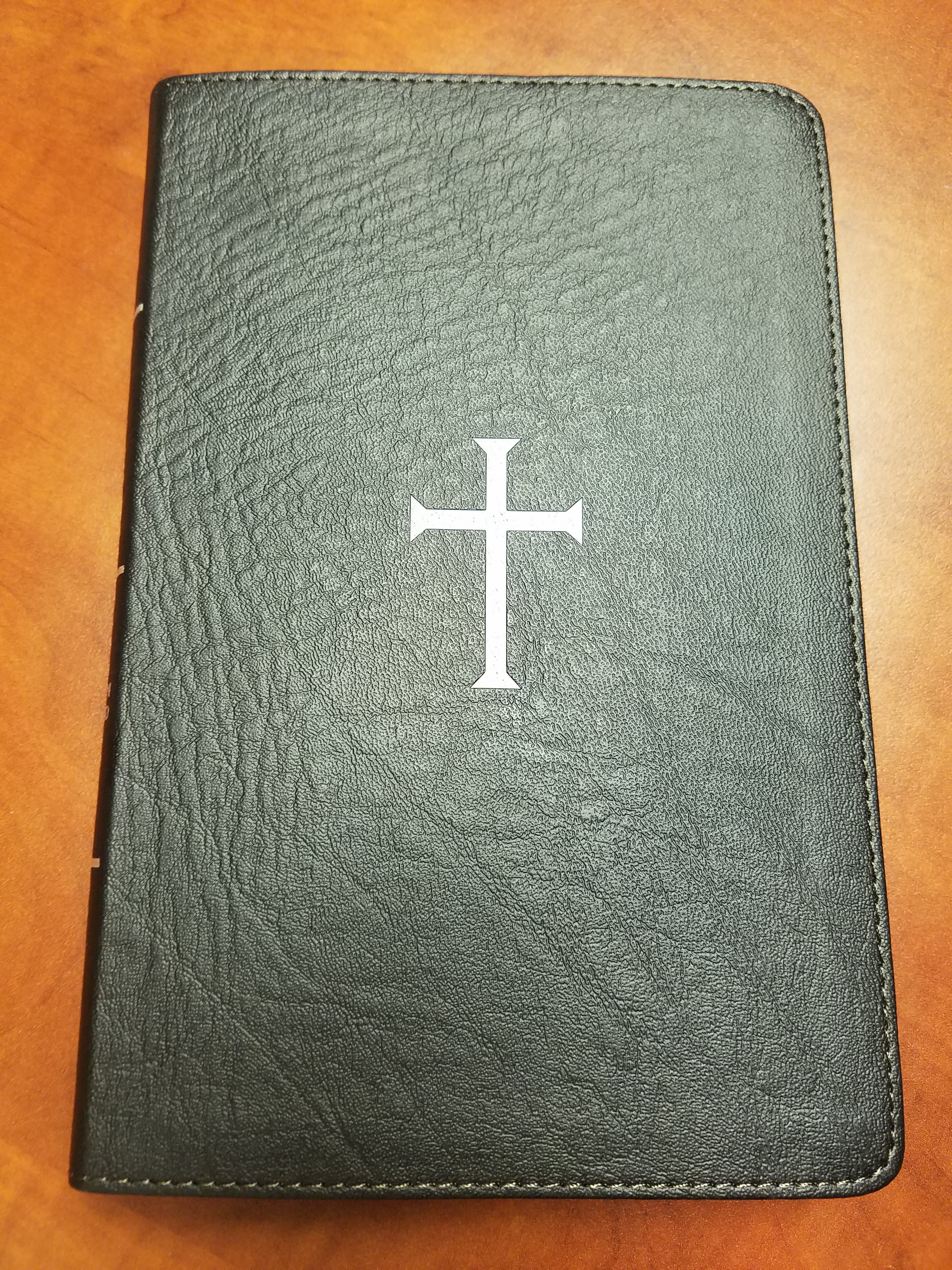The Christian Standard Bible: A Review of the Latest Bible Translation


About a month ago I was sent a review copy of the new Christian Standard Bible. I have been getting acquainted with it and am excited to share my thoughts on it.
Background
The CSB is descended from the HCSB (Holman Christian Standard Bible), which was first published in 2004, and was in my opinion a solid translation with a few unique elements. In fact, when we were looking for a great Bible for my elementary aged son we landed on the HCSB Big Picture Bible. One issue that the HCSB ran into was the unfair perception that because it was distributed by a Baptist company (Holman/Lifeway) that it was a 'Baptist Bible'. In truth, translators came from from many denominational backgrounds, all holding to a high view of Scripture as the Word of God.
But Why Another Translation?
The stated goal of the CSB is to create an 'optimal equivalence' translation that is literally accurate yet easily readable, but is there really a need for another translation? The last few decades there have been many updates and new translations of the Bible appearing on the bookshelves. So when I heard the HCSB was already changing things up after only a few years, I had to ask myself what prompted the name change and the update? I find the best place to look is with comparisons to the Bible it was updated from, the HCSB.
What has changed?
A few changes are noticeable between the original HCSB and the updated CSB:
- The H is Gone from the name. The average Bible reader is really not concerned about the fact that Holman publishes it, so there is really no need for 'Holman' in the title. I'm a man of habit however, and still call my new CSB, The Holman...
- The "bullet notes" of the HCSB are gone from the CSB, but the HCSB's dictionary, topical micro-concordance and bullet notes seem to have been condensed to one all-encompassing concordance, which is a nice move.
- The plan of salvation that was on the front page is no longer present.
- Christ/Messiah - in the HCSB the Greek word Christos (Χριστός) was translated as Messiah when translators felt that Jesus was being referred to in a Jewish context, and Christ when not specifically in a Jewish context. This is helpful for context, but inconsistent in word-for-word translation accuracy. The CSB has moved to the more traditional use of translating Christos consistently as Christ.

- 'Brothers' is changed to 'Brothers and Sisters' where appropriate and called for in context, based on the translation of the word adelphoi (Αδελφοι). Translations such as this are difficult when moving from Greek into English where we have no masculine plural, but the CSB footnotes read that the original word indeed is masculine, but applies to men and women in certain contexts. Think about it this way: a Texan might use the word 'y'all' to accomplish the same purpose, or Midwestern folks might say 'you guys' in reference to both guys and gals. The same thing is going on here in Hebrews 3. But I suppose we can't use "y'all in the Bible...
- Verses in question moved to footnotes. In recent years, a trend has emerged for verses not found in certain Bible manuscripts to be moved out of the text to the footnotes. A unique feature of the HCSB was that these verses remained bracketed in the text, unlike other modern versions (ESV, NIV, NLT). This concept has been reversed and those verses are now found in the footnotes, following the trend of these other translations. The NASB and NKJV are now the only modern versions that continue keep these verses in the text itself.

The Use of Yahweh, which was marketed as a strong point in the HCSB has been changed to the traditional LORD as found in other translations. Some people loved this rendering while some found it awkward and inconsistent. According to the translation team, most readers responded that they were unfamiliar with the Tetragrammaton (a Hebrew name for God, YHWH, which we pronounce Yahweh), and that it was unhelpful and even an obstacle for new Bible readers. The overall thought in changing it was that people can figure out who the 'LORD' is easier than they can figure out exactly who 'Yahweh' is or why we call him that. Hence the change. Concerns over this were addressed by Dr. Iain M. Duguid, a member of the translating team, "as a translator for the original HCSB and part of the oversight committee for the revision, I'd encourage you not to panic. The CSB retains the strengths of the HCSB and (in my opinion) improves on them. Yes, we have followed the NT and most English translation in going back to the LORD for Yahweh, largely because we felt the previous attempt ended up in inconsistencies. But it is a revision, not a wholesale new translation. Many passages have been left untouched because we felt we got them right first time around. In other places, we have sometimes moved in a more literal direction, for example "Lord of Armies" instead of "Lord of Hosts" and "Children of Adam" for "ben adam."
What is the same?
- The footnotes continue to be extensive, even in the small thinline review copy and remain one of the best features of the CSB. These are not half-page-long-study Bible notes, nor are they intended to be, but this review copy is not the full study Bible version (there are several available), and it is nice to see good footnotes in a small carry-around Bible.
- John 3:16 has remained as originally translated in the HCSB. The unique rendering of "God loved the world in this way: He gave His one and only Son..." was a major overhaul of a well-known verse, but it is an accurate translation and is retained in spite of not being what we who grew up in church are using to hearing. The rationale is that the traditional 'For God so loved the world' found in other versions can be tricky in that it leads us to read how much God loved the world, when the intent of the Greek is to imply the manner in which He loved the world. The traditional rendering is provided in the footnotes.
- The use of contractions in dialogue is maintained from the HCSB. This keeps to the stated goal of being literally accurate, yet contemporary sounding.

Overall, the CSB is a highly readable yet highly accurate translation of Scripture, suitable for devotional study and for corporate reading, good for kids, good for adults, deep enough for long-time believers and accessible for those new to the Bible. In seeking 'optimal equivalence', the CSB has attempted to fill a space between the readability of versions like the the NIV/NLT/Message, and the literal accuracy of versions such as ESV/NASB/NKJV. The result is a readable and accurate Bible translation.
Originally published July 27, 2017.







